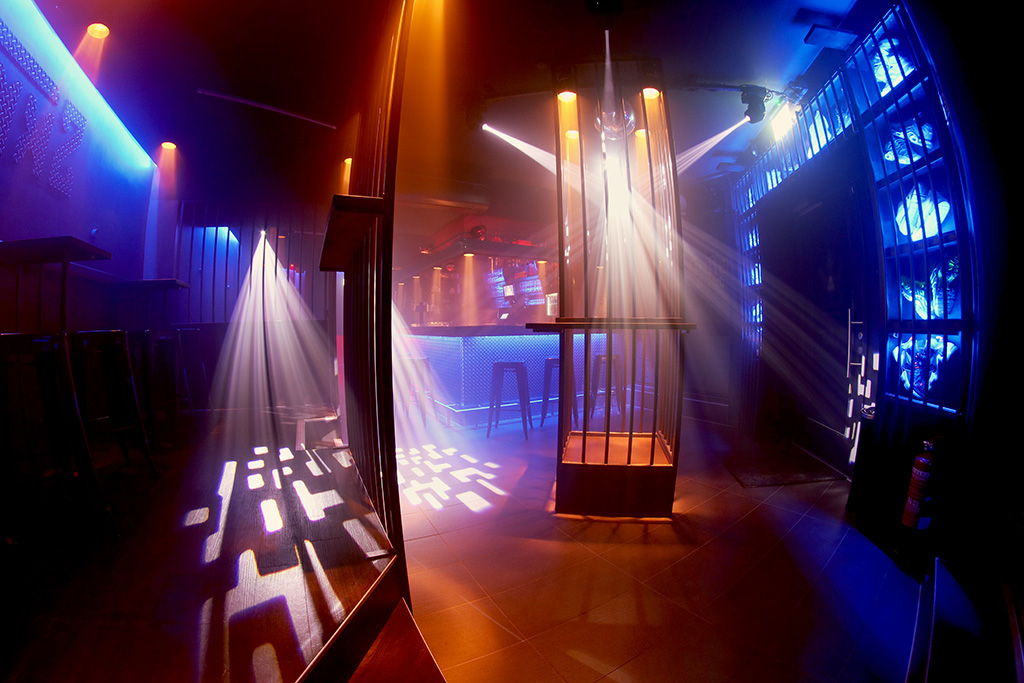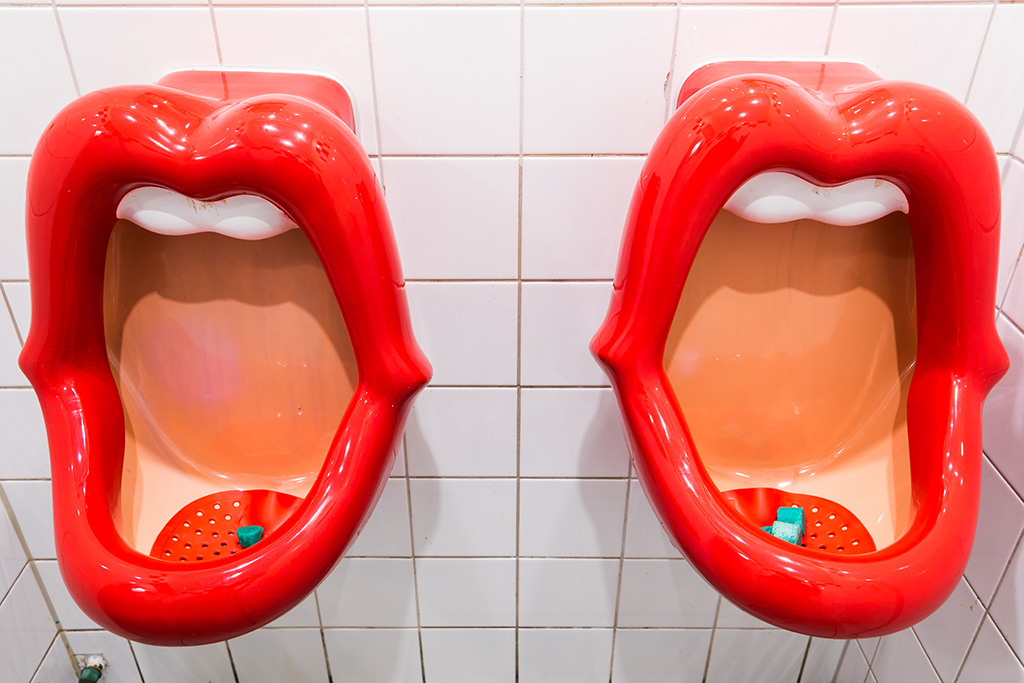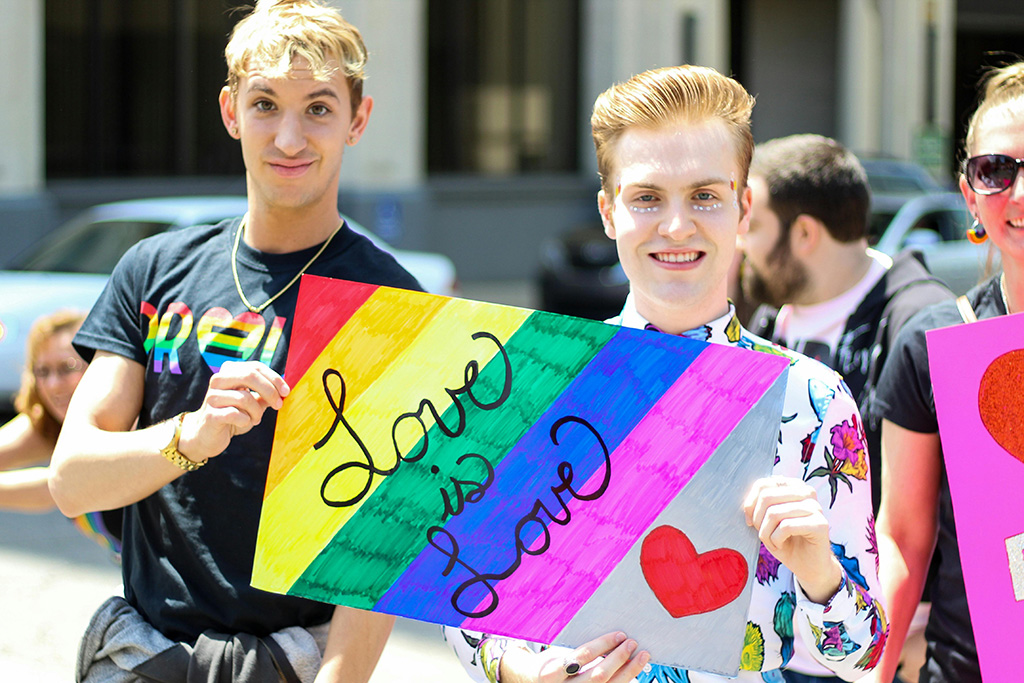Schaafenstraße – the gateway to Cologne’s queer party mecca
At first glance, you’d never guess but the unassuming Mauritius neighbourhood is the place to go for queer nightlife in Cologne. In the area around Schaafenstraße and Mauritiuswall, a number of bars – some flamboyant, some more formal – open their doors in the early evening (not just at the weekend) for a beer or two. This party paradise has an established reputation in the queer community, attracting guests from near and far. Closing time? There isn’t one here. The party goes on into the early hours and the last reveller turns off the lights as they totter out of the door. Musically speaking, there’s something for everyone. But it’s not just the music that’s big on inclusion – everyone’s welcome here, whatever their gender or sexuality.
Rubber Pub Crawl
The men-only Rubber Pub Crawl is a latex-clad bar-hopping extravaganza that culminates in a visit to the Kinkz fetish bar. It’s organised by the “Cologne Rubber Men” and the idea, apart from raising visibility, is to enjoy a fun evening with like-minded people. It’s also an ideal way for fetish newbies to get their first glimpse of the scene.
Schampanja, Mauritiuswall 43
Much more than your run-of-the-mill pub, this author can tell you that Schampanja is the gay bar to go to in Cologne. They proudly claim – and quite rightly – to have been open almost every day since 1985.
Ex-Corner, Schaafenstraße 57-59
With its exuberant vibe and exquisite blend of German Schlager and local kölsch hits, Ex-Corner is a wonderful place to party into the small hours – even on weekdays. Throw some shapes on the dancefloor or chill as you watch the goings-on with a drink in your hand – either way, Ex-Corner has you covered.
Iron Cocktail Lounge, Schaafenstraße 45
More a cocktail bar than a pub, compared to the other queer bars in this part of town, things are a little more sedate at Iron Cocktail Lounge. The alcohol’s stronger, the drinks more expensive and the furnishings more contemporary. At 25, even the age limit surpasses the norm. As well as the classics of the cocktail world, they mix their own modern takes too.
Kinkz, Balduinstraße 20

If it’s always been your dream to strut your stuff behind the bars of a cage, Kinkz is where you need to be. The name says it all really – fetishes of all kinds are welcome and this men-only bar is perfect for meeting like-minded people for a bit of fun. The official happy hour is from 7 to 8pm, Tuesdays to Sundays. Whether the hours after that are happy too depends on you.
Female fetishists will be glad to hear there’s a kink techno party (called Nurböse) here once a month that provides a safe space away from societal norms.
Exile, Schaafenstraße 61a
Exile is another gay institution worth checking out on Schaafenstraße. This popular bar regularly plays host to Bitchy Bingo: fun nights presented by saucy drag queens, racy humour included. The charming Pam Pengco, Lucy Diamonds and Chrystal Math take it in turns to act as compere.
Die Mumu, Schaafenstraße 51

Unlike other places that are more geared to men, women are welcome here too. The clue’s in the name: Mumu means “pussy”. This bar is a vision in pink where even a trip to the toilets, with their designer “pouting lips” urinals and brightly coloured disco lights, is an experience in itself. Tuesday is kölsch (the local beer) and karaoke night as things warm up for Friday and the weekend. And on Saturdays, a varying range of DJs get the crowd pumping.
Women only at BOIze Bar
Located in the city centre, not far from the Mauritius district, hip BOIze Bar provides a safe, “no men allowed” space for Cologne’s female queer community. If you’re into trash TV, you’ll be glad to know they regularly screen the Princess Charming dating show here, with contestants in attendance.
Where? Friesenstraße 43, 50670 Cologne
Cruising at Pullermanns – Cologne’s oldest gay bar
Visitors to Pullermanns are usually looking for something more than beer. You can get a drink here too but it’s mainly famous for being a legendary pick-up joint where people can indulge in fetishes and celebrate their sexuality. There are different fetish themes on different days; those in the know will understand what the “Golden Shower” night is that’s held on every first and third Sunday of the month. On Mondays, the dress code is quite literally “nothing”.
Where? Mathiasstraße 22, 50676 Cologne
Cologne Pride – because love is love

In July, the city centre bursts with “ColognePride”. Though there’s a fair bit of partying, this two-week event also includes numerous activities aimed at informing the public and policymakers. The programme boasts a total of 60 hours of live music, show acts, panel debates and information events, presented on three stages. In a grand finale lasting a whole three days, Cologne’s biggest street party shines a rainbow-coloured light on the Altstadt district. ColognePride culminates in the Christopher Street Day Parade, when what is (un)officially the most important day on the queer community’s calendar draws a diverse crowd to the streets – including people from outside the community. In fact, the Pride Parade is Germany’s largest CSD protest march. A convoy of creatively decorated trucks, equipped with booming speakers and colourfully clothed protesters, makes its way across Deutzer Brücke bridge and right into the heart of the historic part of the city, revellers accompanying them on foot all the way. The parties carry on in the evening, with an extensive programme of after-show events taking the festivities into the small hours. Another ColognePride highlight is the annual XTREME! fetish extravaganza at the trendy Essigfabrik club, where men and boys from around the world meet up to party. There’s an impressive line-up every year, with international DJs to ramp things up.
In 2023, more than 1.4 million people took part in the Pride Parade – more than ever before. Whether they opt for vinyl, leather, glitter or nothing at all – visitors can wear whatever they want. In fact, the CSD philosophy is “more is more”!
For further information about what’s on when, take a look here.
Want to find out what else queer Cologne has to offer? We’ve got some more ideas for places to explore here.

0 comments on “Queer Cologne: top tips for a night out on the town”